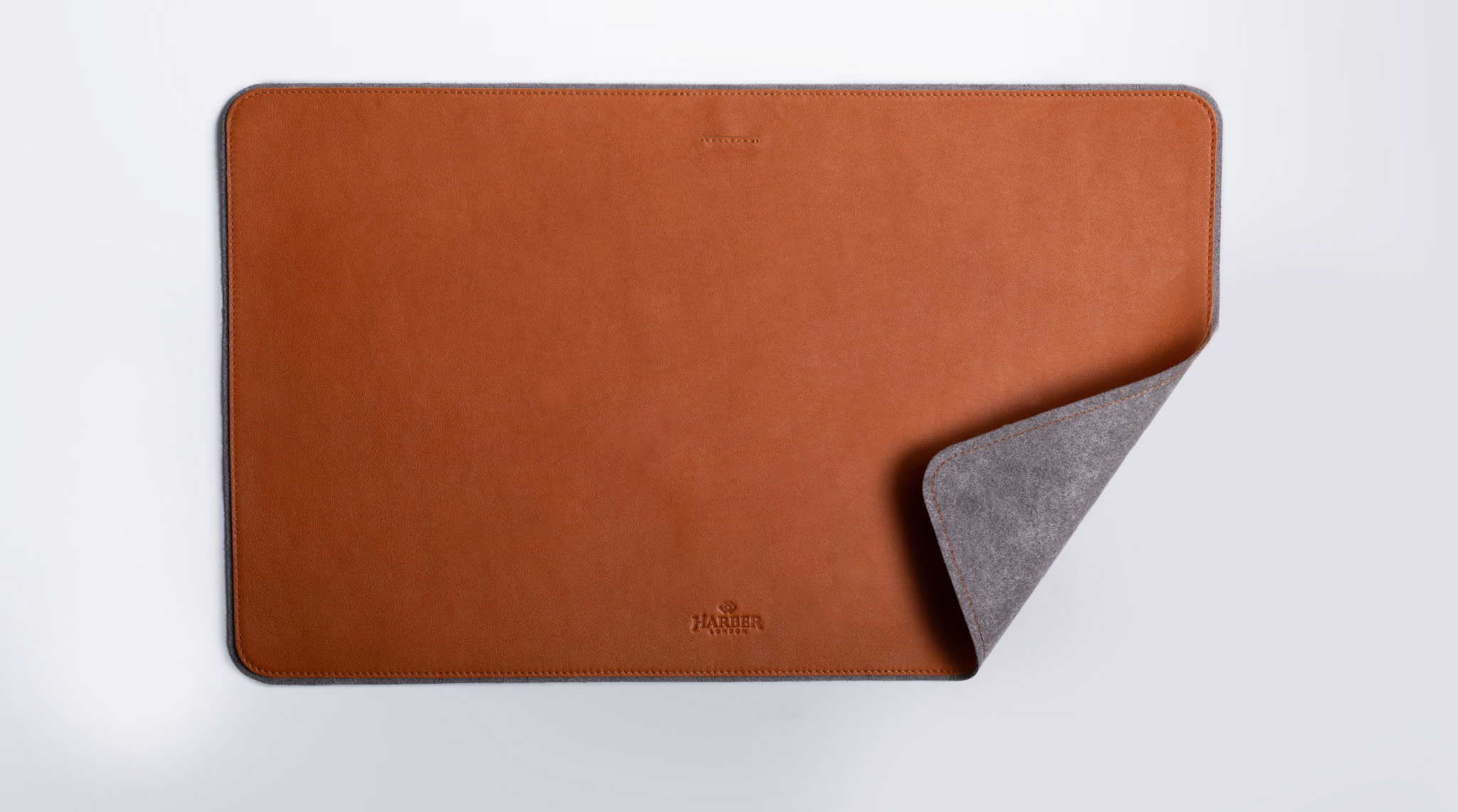This beautiful leather desk mat is the WFH upgrade you didn't know you needed
Add a touch of sophistication to your workspace with a handmade desk mat from Harber London


In my time spent working from home over the last 18 months, my work space has slowly transformed. It started in the living room on the dining table with a laptop and a dining chair. Then the chair was replaced with an office chair and the laptop was joined by a separate monitor, keyboard and mouse.
Then towards the end of last year, I moved house and gained a spare bedroom which I set to re-modelling into a home office. The guest bed was replaced with a sofa bed, and I had a custom-sized office table made from recycled scaffolding boards by a local craftsperson who I found on Etsy.
On my new waxed pine desk now sits my 27” Samsung curved monitor with a Logitech Streamcam on top for the many video calls I do (the T3 team is split between London, Bath and a couple of locations in the US), a wireless Apple keyboard, a Logitech MX Anywhere mouse and – a new purchase as I was tired of the fan noise from my Intel Macbook Air when doing video calls – an M1 Mac Mini. That turned out to be a great buy – there are ports for Ethernet, USB and HDMI cables and despite buying the lowest spec model, in the nine months I’ve been using it I’ve never heard the fans come on once.
Finally, I replaced all the bulbs in the room with Philips Hue bulbs (which I snapped up in the Black Friday sales, the best time to stock up on Hue). That meant that I could set the rooms's colour as an energising daylight white during the working day but change it to a softer tone in the evenings. The updated Hue app, with its new Hue scene gallery, makes this really easy as it provides a wealth of colour options to suit your mood.
I’ve been really happy with my set-up. It’s a productive space that I can use for work during the day and with a press of the Hue light switch I can change its ambience to be a relaxing space for evenings and weekends so it doesn’t feel like I'm still in an office. I’m considering adding a Sonos or Google smart speaker for music although I’m pretty happy with a Harmon Kardon Aura speaker I bought a few years ago, so that upgrade can wait.
The upgrade I didn't know I needed

One thing I hadn’t considered was a desk mat, until Harber London asked me if I’d like to take a look at one of theirs. I’ve previously reviewed the Harber London Laptop Briefcase and the Harber London Classic Rucksack and I’ve been really impressed with the workmanship that this Spanish company applies to its products as well as the beautiful quality of the full-grain leather that they use.
The desk mats come in three sizes: 50cm x 30cm, 80cm x 32cm, and and 80cm x 45cm. There’s a choice of three colours (tan, black and navy) and two backings (wool felt or microfibre). Harber London recommends the thicker felt backing for rough or natural wooden tables and the thinner microfibre backing for glass tables or smooth desk surfaces. At the top of the mat, there’s a small cut-through slot that you can pass a cable through while there’s also a subtle Harber London logo embossed in the centre of the bottom edge of the mat.
Get all the latest news, reviews, deals and buying guides on gorgeous tech, home and active products from the T3 experts
So what does the mat do? First, it protects your desk’s finish from being worn away by your mouse or other peripherals. Second, it provides a soft surface for the devices you place on it – and for your wrists. I feel much happier placing my phone, camera lens down, on the desk mat than I do putting it down that way on a hard surface. And third, it frames the objects on your desk in a really elegant way, adding a touch of sophistication to your desk, and that’s what I really like about it. I’m a big believer in Marie Kondo’s philosophy that the objects we surround ourselves with should spark joy, and the Harber London desk mat is one such object.
These desk mats are handmade, quality items which should last for years, so they’re not cheap, but I think they’re worth the price. The medium mat is £89/ $123; the large is £109 / $150; and the extra large is £129 / $178. If you order from Harber London (link below) shipping is free.

Paul Douglas is Global Digital Editorial Strategy Director at Future and has worked in publishing for over 25 years. He worked in print for over 10 years on various computing titles including .net magazine and the Official Windows Magazine before moving to TechRadar.com in 2008, eventually becoming Global Editor-in-Chief for the brand, overseeing teams in the US, UK and Australia. Following that, Paul has been Global Editor-in-Chief of BikeRadar and T3 (not at the same time) and later Content Director working on T3, TechRadar and Tom's Guide. In 2021, Paul also worked on the launches of FitandWell.com and PetsRadar.